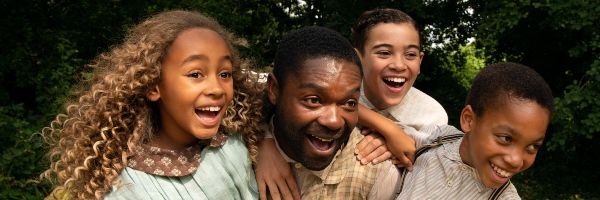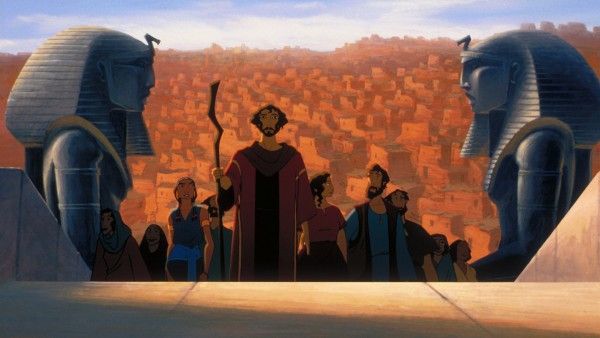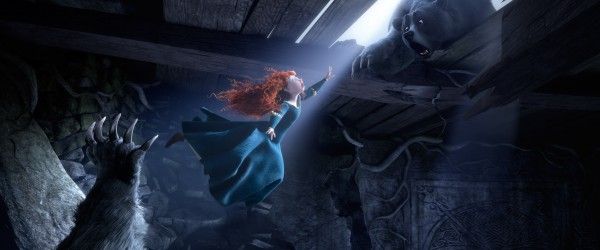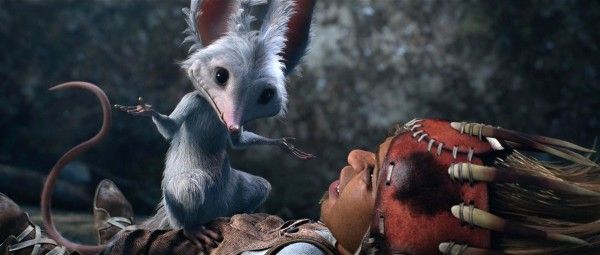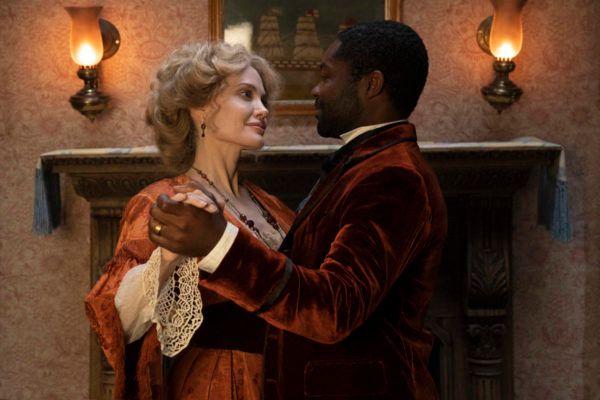Brenda Chapman always loved fairy tales.
“My older brother, who is sixteen years older than me, would always read Del Comics, the westerns, all the time, but he would always buy me these Junior Classics,” Chapman told me during an interview recently. “Even before I could really read I would look at the pictures. Beauty and the Beast and The Little Mermaid were my favorites.”
Years later, after she graduated from California Institute of the Arts, a private college in Santa Clarita, California, that was co-founded by Walt Disney and Roy O. Disney (along with Pasadena artist Nelbert Chouinard), Chapman would return to fairy tales. After helping out in 1988’s Who Framed Roger Rabbit, she worked as a story artist on The Little Mermaid and Beauty and the Beast, two of Disney’s most beloved storybook adaptations and hallmarks of the Disney Renaissance, a time when the Disney animation brand rose to prominence once more after years of old guard stagnation. (She would also serve as head of story on The Lion King and later work won The Hunchback of Notre Dame and Fantasia 2000.) Chapman’s work is legendary in animation circles; her storyboards on The Rescuers Down Under turned a chatty, chunky sequence into a moment of wordless beauty, and this quiet lyricism would define the rest of her work.
When I asked her about her time at Disney, whether or not they knew that they were doing something really special, she demurred. “I think we were just excited to be on the second wave. We all knew we were at the right place at the right time and were excited to be there for the rebirth of animation, at the studio,” Chapman said. “We were aware of what was going on but we were more in the trenches trying to keep it going.”
Chapman was eventually poached by former Disney executive Jeffrey Katzenberg for his new project, DreamWorks Animation. DreamWorks SKG was the first real Hollywood studio since United Artists and the DreamWorks Animation segment, personally run by Katzenberg, was designed to become an animation powerhouse that could directly complete with Disney (then run by Katzenberg’s former boss and current nemesis Michael Eisner). Katzenberg recruited Chapman to set up and run the unit’s story department. So she was surprised when Katzenberg came to her with a bigger ask – be the director of the studio’s first animated feature, the biblical Prince of Egypt. “I was reluctant to be a director. I was very happy to be a head of story,” Chapman said. “Jeffrey Katzenberg talked me into Prince of Egypt but nobody else would do it.” She said that Katzenberg even asked her husband, A Goofy Movie and Tarzan director Kevin Lima, if he wanted the job before the exec offered it to her instead. It was a big deal that Chapman said yes. She was the first female director to take on an animated feature of that size and complexity. (After working on the film for months by herself, she was joined by co-directors Simon Wells and Steve Hickner.) “It was to me like one big head of story job that you also got to direct the look of the film to support the story. What was fun for me was I got to work with a lot of people I knew, and a lot of new people, and we were all trying to make this – what was supposed to be the first film for DreamWorks Animation.” (Some historical context: after a brutal fight with Disney, Katzenberg rushed Antz into production to beat A Bug’s Life to theaters, so Antz wound up being the first DreamWorks Animation film.) Chapman continued: “The camaraderie on that project… it was a nice memory I have.” She’s being modest, of course. Her assignment to The Prince of Egypt was huge, for animation and filmmaking in general. It was a breakthrough moment and would lead to filmmakers like Jennifer Yuh Nelson, who would go on to direct two of the Kung Fu Panda sequels, and Domee Shi, who is directing an adorable-sounding movie for Pixar right now, flourishing in the field.
After spending several more years at DreamWorks, where she got to work on features as varied as Aardman’s Chicken Run (“We were still directing Prince of Egypt and there was this all hands on deck call, where everybody had to grab a sequence and go with it. Going from directing something as serious as the Ten Commandments and then getting to draw chickens was great”) and The Road to El Dorado, she moved to Pixar. She was the first female animator on the storied Pixar Brain Trust (advising on such classics as WALL•E, Up and Toy Story 3) and the first female filmmaker to direct her own feature, The Bear and the Bow (later retitled Brave). This is where things get complicated.
“Everybody says I was taken off halfway through [production] but I was taken off a year or so before release. I had been on it for 6 years,” Chapman told me. The learning curve from traditional, hand-drawn animation to the world of 3D computer animation was a steep one. “What I found very different about that was that it took a couple of years to really see what the film was going to look like. It takes so long to build the world and create the characters in the computer,” Chapman said. “Whereas, when you’re doing traditional animation, you draw it and that’s it. Somebody colors it in and that’s what it’s going to look like. That was a real challenge for me. It was like, These paintings are all wonderful but what is it going to look like?”
In 2011, Chapman described her dismissal from Brave in the Los Angeles Times as owing to “creative differences.” Even now, she says, she can’t “really get into it.” But then I asked her about the snow. I had heard that her version of Brave had been set in the snow; after she left the setting got a lot sunnier, supposedly at the behest of the Scottish Tourism Board. “The snow represented the relationship between the mother and daughter,” Chapman said. “At the end, when the mother returns to her state, you see the ice melting. It was pretty straightforward. I don’t think it was a huge loss to lose the snow.” Still, it was a key part of the story that was ultimately lost. “My goal was to have the mother/daughter relationship be as strong as it was. That still came through in the film,” Chapman said, who based the story of Brave around her relationship with her own daughter. “There are a lot of little things but for the most part, there may have been things that had more depth in my version, like the witch’s curse was less about bears and more about the wish Merida had – Make my mother more like my dad. Her dad is a big bear of a guy. There was more to that curse than what ended up in the film.” That’s right – if you ever wondered, why a bear? Now you know.
Still, Chapman won the Oscar for Best Animated Feature, sharing the spotlight with Mark Andrews, a Brad Bird confederate who was brought in to replace her (he would go on to serve on the Pixar Brain Trust). “I still love the movie, I’m still proud of it,” Chapman said.
After leaving Pixar, she wound up at Lucasfilm, returning her to her fairy tale roots – literally. It was reported that she was working on a film about fairies. Apparently, she was working on a project that was already being developed – and was in deep trouble. “I was more of a consultant on that trying to help it make sense. It was pretty unwatchable when we got there and tried really hard to bring it back to where people could make sense of it and enjoy it,” Chapman said. “I didn’t want to dive in and try and direct it. I just had a thing about going in and replacing a director after what I’d just been through at Pixar.” Eventually Gary Rydstrom, another Pixar expat and genius sound designer, came in. After that Chapman stayed on to help him on what would become Strange Magic, a jukebox musical loosely based on Shakespeare’s A Midsummer Night’s Dream animated entirely by Industrial Light & Magic (it’s on Disney+ right now, just watch it). “There was a real Herculean effort that went into that one. I know that it didn’t turn out exactly how people wanted. But we had inherited a lot of assets and inherited a lot of what was there,” Chapman said. “It was an interesting project, really wonderful people who worked on it. It was a great experience. But it didn’t do as well as we hoped.” Released in 2015, it wound up being the first Lucasfilm project released by Disney and you got the sense that they had no idea what to do with it.
After Strange Magic, she briefly returned to DreamWorks, helping to develop Rumblewick, based on the book My Unwilling Witch by Hiawyn Oram, a project that Chapman left early on and was ultimately never made. After DreamWorks Animation (round 2), Chapman became attached to Come Away, her first live-action feature. It is in theaters and on demand today.
Returning Chapman to her fairy tale roots, Come Away imagines what would happen if Peter Pan and Alice (of Alice in Wonderland) were brother and sister, and how their magical adventures are informed by the tragic death of their older brother. (David Oyelowo and Angelina Jolie are their parents, who cope with alcohol and gambling.) It’s a beautiful movie, full of visuals that only an artist as thoughtful and nuanced as Chapman could conjure. An early sequence shows the kids playing in the woods, dreaming up a frightful duel with pirates; as Chapman’s camera whips around, the metal swords are revealed to be splintery sticks and back again. It’s graceful, stunning filmmaking that speaks to Chapman’s finely honed, one-of-a-kind storytelling skills. But besides these more outwardly magical moments, it’s also a deep meditation on loss and how tragedy can inform creativity.
When I asked if tackling a live-action film was a priority for her (like it had been for fellow Pixar vets Andrew Stanton and Brad Bird), she said no. “I didn’t have a desire to direct a live-action film. It was really the script that ended up in front of me that I read and thought, Well, if I’m going to do one, this is the one,” Chapman said. “It had so much in it that I love and that I’m familiar with but there was this tragic aspect to it that appealed to me, even though I’ve dealt with that in The Lion King and Prince of Egypt, I didn’t get to explore it that much. You have to gloss over it more just because of the medium, really, and what people expect from it. I thought maybe I had more wiggle room to explore that. I enjoyed that process.”
Still, the production was far from seamless. Just like the sharp curve from traditional animation to computer animation, there were similar issues here. “The behind-the-scenes politics I wasn’t expecting and that was much more difficult to navigate than I ever expected,” Chapman admitted. “That could make things harder. But you didn’t have time to dwell on it too much because you had to get stuff done. That was a little weird.” She said that the producers re-cut the film following the film’s production and that, somewhat ruefully, “there are things that I miss.”
Fear not, though, this is a new Brenda Chapman movie and that should be celebrated. It’s full of all of the quiet moments and deeply felt characterizations you have come to expect from her and weaves the mythology of two beloved characters in new and exciting ways. In other words, it’s everything you would believe a movie from someone who contributed so memorably to the heyday of the Disney Renaissance and Pixar’s Brave, would make.
It was enough to make me ask her about the recent slate of Disney live-action remakes of their animated classics, including several that Chapman contributed to (The Little Mermaid is about to start shooting in London). “I understand why they’re doing it,” Chapman said of the recent remakes (Jordan Nash, who plays the son that dies in Come Away, appears in the Will Smith-led redo of Aladdin). “They’re trying to freshen up the franchise but they all feel like tracings of really good drawings.”Chapman’s sentiment makes perfect sense.
It also made me wonder: would she ever consider directing a live-action remake of one of the animated classics?
“Never say never,” Chapman said. Then paused. “Give me back Brave, then maybe.” Now that would be truly magical.
Come Away is out now on VOD and in theaters.

